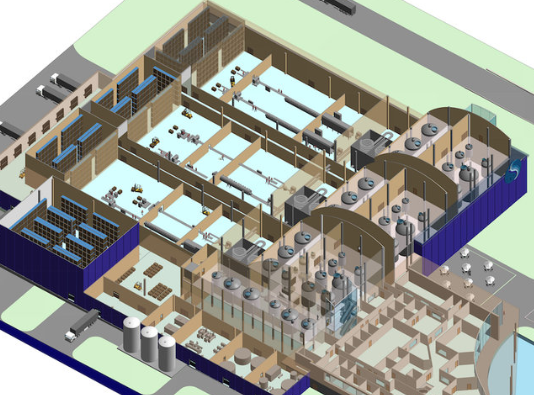BlueNalu- which produces seafood directly from fish cells – intends to replicate its initial R&D facility to dozens of locations across the globe – with each site about creating 72 million four-oz seafood fillets or equivalent units per year.
In a press release, BlueNalu has announced its commercialisation strategy and food facility design schematics for large-scale production.
The company claims that this is the first time that any company has provided facility design schematics illustrating the vision for large-scale production of foods via cellular agriculture or aquaculture.
Muscle cells
The company isn’t creating vegan alternatives to meat, rather it creates meat from a needle biopsy’s worth of muscle cells.
The former Vice President of Marel Fish Seattle and current NZKS Chief Operating Officer Alan Cook told SalmonBusiness last year lab grown meat were the real disprupters to the industry.
But for now, only small quantities have been produced. For instance, the San Francisco-based company, Wild Type said that it hopes to eventually produce full slabs of lab-grown salmon at a competitive retail cost of USD7 to USD8 per pound – a far cry from the USD 200 salmon rolls (each) it produced in June.

Scaling up production
“We have developed an optimal strategy for scaling up production of cell-based seafoodfrom a variety of finfish, crustaceans and mollusks to meet global demand,” stated BlueNalu President & CEO Lou Cooperhouse. “BlueNalu will provide products that are healthy for people, humane for sea life, and sustainable for our planet. As a result, we can have a major impact on supplementing our global supply chain for seafood.”
BlueNalu has created a five-phase commercialization strategy that starts with R&D and small-scale pilot testing, evolves to a phase that enables market research testing, and culminates in food facilities that are 150,000 sq. ft. under roof. It is anticipated that each facility will produce up to 18-million pounds (8164 tonnes) of finished seafood products per year, or 72 million four-oz seafood fillets or equivalent units per year.

BlueNalu is currently entering its first phase of development, producing whole seafood medallions and fillets at pilot-scale. The company plans to introduce products into a test market in two to three years, and break ground on its first large-scale production facility in five years.
Facilities
“Over the past year, we have engaged with bioprocessing and food engineering specialists, as well as architects that specialize in food facility design and construction, to determine the optimal process flow and the underlying assumptions that will result in maximum production capacity and flexibility, and minimal capital and operational costs. As can be seen from our schematics, each production facility will look like a hybrid between a microbrewery and a conventional food production facility. BlueNalu’s food facilities will produce an array of raw and cooked, fresh and frozen seafood products that are prepared in a trusted and familiar way,” said Cooperhouse.
The BlueNalu facilities will each be designed to serve regional population centers, initially focused on serving countries in North America, Asia, and Europe, where there is the greatest current and projected per capita consumption of seafood. The company intends to replicate its initial facility to dozens of locations across the globe, making continual operational enhancements along the way, and selecting varieties of fish, product applications, and marketing channels to meet the needs of each selected region.
Achievable in the near term
“We have recently developed stable fish muscle cell lines of multiple species, and accomplished this without using genetic engineering,” said BlueNalu CTO Chris Dammann, PhD. “This is critical, since large-scale production of seafood products will require a reliable and consistent supply of real fish muscle cells.”
BlueNalu plans to produce seafood from species that are overfished, primarily imported, contain higher levels of mercury and other environmental pollutants, and/or are difficult to farm-raise. It also will focus initially on seafood that commands a premium price and has strong consumer familiarity.
“We are pleased that consumers world-wide are embracing alternative proteins,” said Cooperhouse. “BlueNalu is excited to announce that large-scale production of cell-based seafood is achievable in the near term.”

